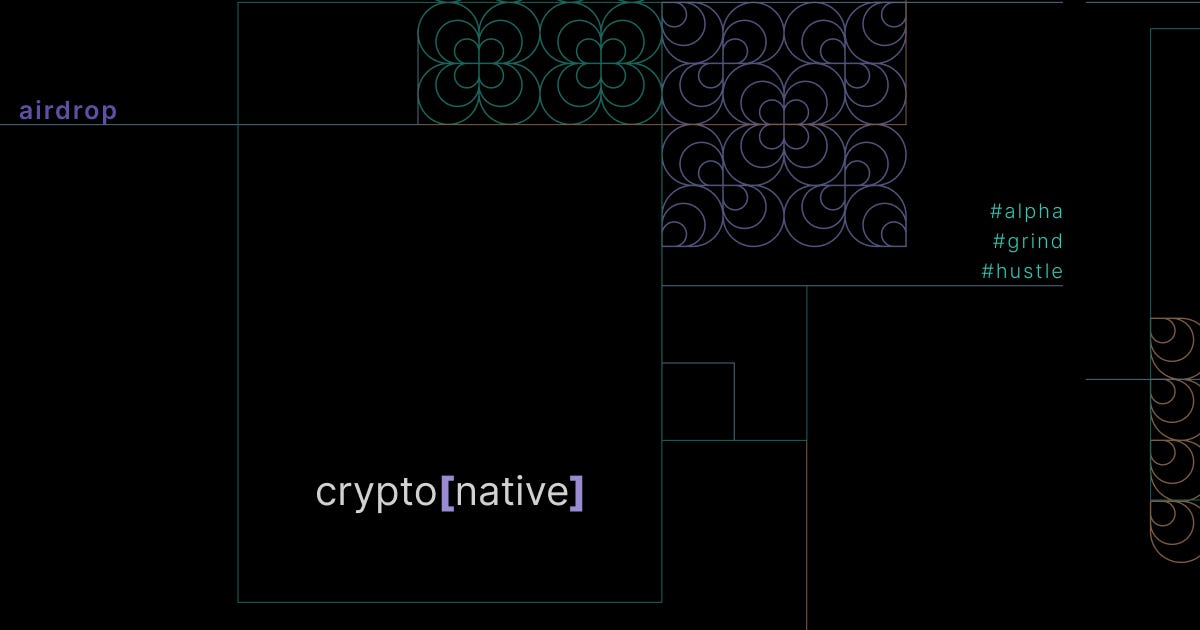Part 2: Browse Strategies, Deploy Yield
Where capital becomes strategy, and execution becomes code
The Tokenized Treasury: A New Operating System for Public Capital is a four-part series shaped by decades inside early-stage venture, enterprise sales, the digital asset ecosystem, and some of the most disruptive political operations in the country.
It draws from a team that’s scaled VC-backed startups, led enterprise transformations, advised global institutions, and helped architect Web3 infrastructure from treasuries to token design. Just as importantly, it’s backed by an extremely deep bench of political experience, spanning gubernatorial races, national causes, and the digital platforms that powered them before most people knew how online fundraising worked.
This isn’t theory. It’s pattern recognition from people who’ve sat at both the tactical and strategic tables, inside war rooms, boardrooms, and blockchains alike.
What follows in Part 1, Part 2, Part 3, and Part 4 is a blueprint for turning idle public assets into programmable capital, deployed by agents, made transparent, and eventually governed on-chain.
Before someone tries to sell it back to you in a deck, read this.
Web3 is changing the game: are you ready to invest smart? Explore tailored strategies and guidance at Nautilus.Finance. Stay updated in real-time by following Tom Serres on X.com or LinkedIn.
From Static Value to Dynamic Execution
In Part 1, we focused on the unlock. The hard part. The part most public institutions never get to, because it requires admitting that your balance sheet has more trapped value than active capital. We talked about tokenizing land, gold, and seized crypto. We introduced structured conversion, agent-based execution, and a new way to think about public assets, not as symbols of civic wealth, but as composable capital systems that can be activated, routed, and made productive in the open.
But now the question shifts.
Once your assets are tokenized, what do you do with them?
This is where most treasuries freeze. Not because they lack options, but because they default to old muscle memory. The traditional instinct kicks in, move the cash to a bank, outsource the allocation to an asset manager, and hope the yield beats inflation. If the stakes feel higher, maybe there’s a consultant involved. Maybe a whitepaper gets written. Or worse, the capital just gets warehoused, parked in a low-interest account, waiting for the next budget cycle, locked in stasis.
But tokenized capital isn’t static. It’s programmable.
It doesn’t just sit. It can listen. React. Rebalance. Move itself, safely, transparently, and according to rules your institution defines. And with the Agent Council already in place, you don’t need to hire a hedge fund to do the thinking. You don’t need a 74-slide deck. You need a policy. A strategy. A threshold. A risk cap.
You need execution that runs on rails.
This is where the Strategy Browser comes in. It’s not just an interface, it’s the operational layer where your tokenized capital becomes active capital. It’s where intent becomes instruction, and instruction becomes automated, audit-ready performance.
The Strategy Browser: Your Treasury’s New Interface
The Strategy Browser is where programmable capital meets a programmable future.
It’s not just an interface, it’s a curated environment for deploying intelligent capital strategies. A civic-grade UX that replaces manual allocation with mission-aligned orchestration. You’re not trading. You’re not speculating. You’re browsing economic intelligence, organized by impact, permissioned by policy, and filtered through the risk, liquidity, and mandate constraints of your institution.
This is what replaces “hope” as a strategy.
Inside the Browser, you’re not entering a position manually or emailing an asset manager to confirm what you think you already asked for. You’re interacting with a live, permissioned marketplace of deployable strategies, each one capable of improving your treasury’s P&L, offsetting a budget deficit, or freeing up capital to fund public priorities. Think of it less like a fintech dashboard, and more like a strategy marketplace, where every listing is a composable building block for your civic balance sheet.
Some are tried-and-true: delta-neutral vaults that preserve capital and generate predictable yield, even in volatile markets. Others are risk-on, alpha-seeking, time-bound, volatility-aware strategies built with complex execution logic, each one wrapped in verifiable smart contracts and constraint logic. And this is where it gets powerful, strategy creation isn’t limited to asset managers, consultants, or pension board insiders.
It’s open.
The Agent Council doesn’t care if the person who designed a high-performing strategy lives in New York, Nairobi, or a university dorm in Cameroon. If the math holds, if the rules are auditable, and the permissions align with your treasury policy, that strategy can be simulated, previewed, and, if approved, deployed. By anyone. For anyone.
A midsize city might adopt a yield-maximizing USTB ladder built by a DeFi quant in Lagos. A pension fund might allocate 2% of its stablecoin reserve into a delta hedge designed by a DAO researcher in São Paulo. A tribal government could deploy a liquidity-matching engine created by an open-source strategist in Bangalore. The Browser doesn’t care where the genius comes from. It just needs constraints, on-chain logic, and proof of function.
And when a strategy works, the benefit isn’t theoretical. It’s budgetary reality. It’s new funding for school programs. For clean water. For climate resilience. For digital infrastructure. The connection between strategy and civic life becomes real, the quality of your treasury’s yield strategy determines the quality of the services you can deliver.
This isn’t just financial tooling. It’s infrastructure for better decisions. For better funding. For better public systems.
And it runs not on pitches, promises, or panels, but on code.
Explore More From Crypto Native: Digital Asset Reserves: From Gold to Bitcoin, Making Time Fungible, Liquid Startups: Instant Gratification Tokenized, and Rise of the AI Butler (Who Codes).
Strategy Logic, Not Sales Pitches
Keep reading with a 7-day free trial
Subscribe to crypto[native] to keep reading this post and get 7 days of free access to the full post archives.
![crypto[native]](https://substackcdn.com/image/fetch/$s_!baju!,w_80,h_80,c_fill,f_auto,q_auto:good,fl_progressive:steep,g_auto/https%3A%2F%2Fsubstack-post-media.s3.amazonaws.com%2Fpublic%2Fimages%2Fc94827b0-d403-4ff4-a1dc-b507623bbbd2_1000x1000.png)

